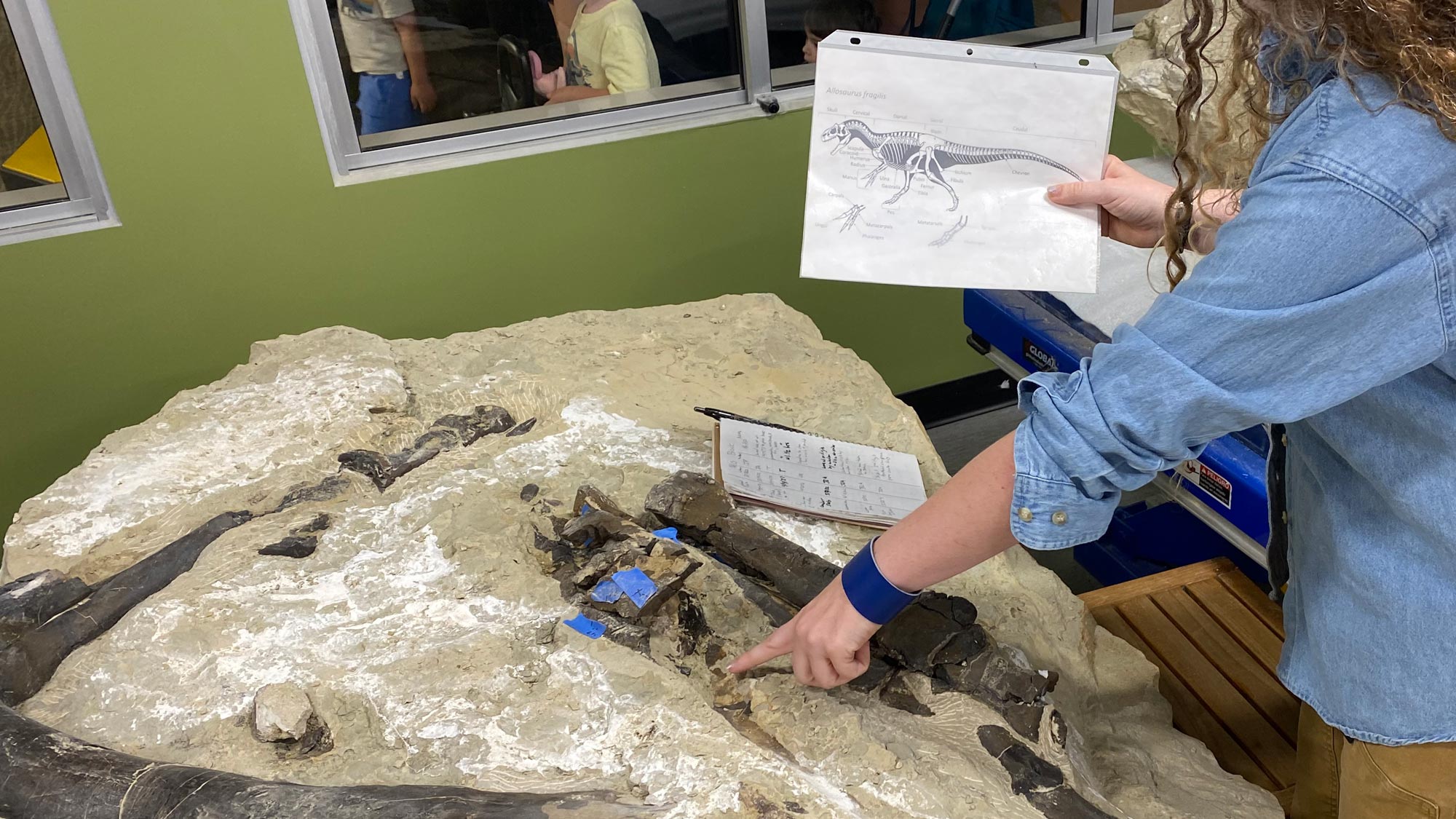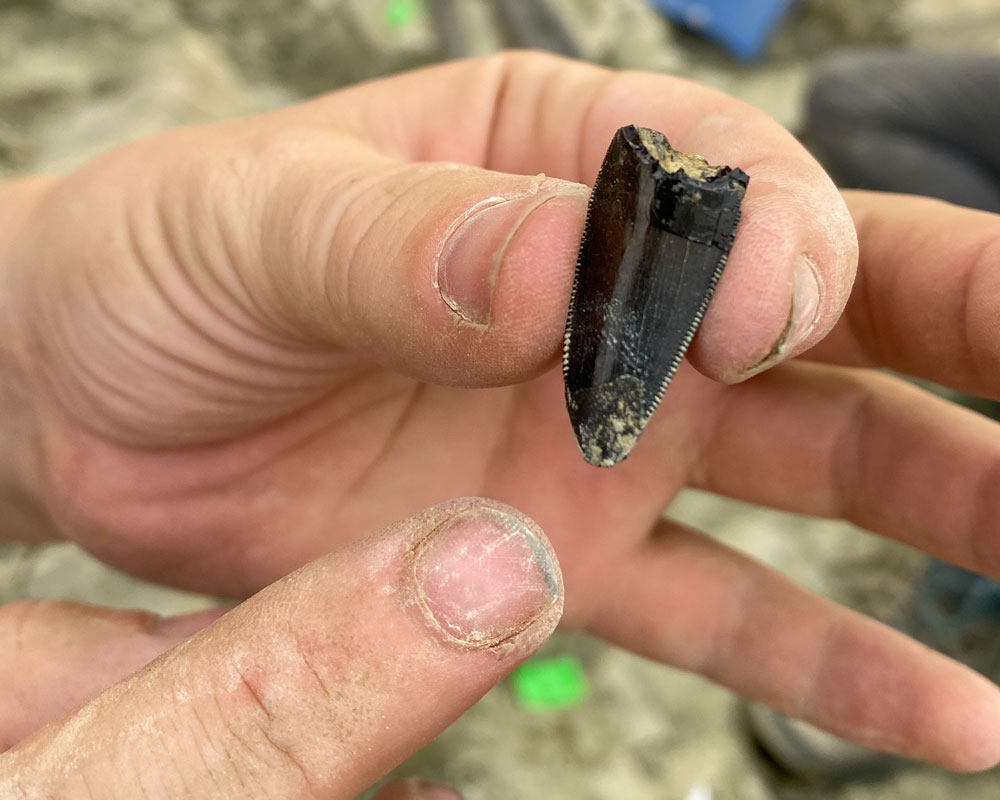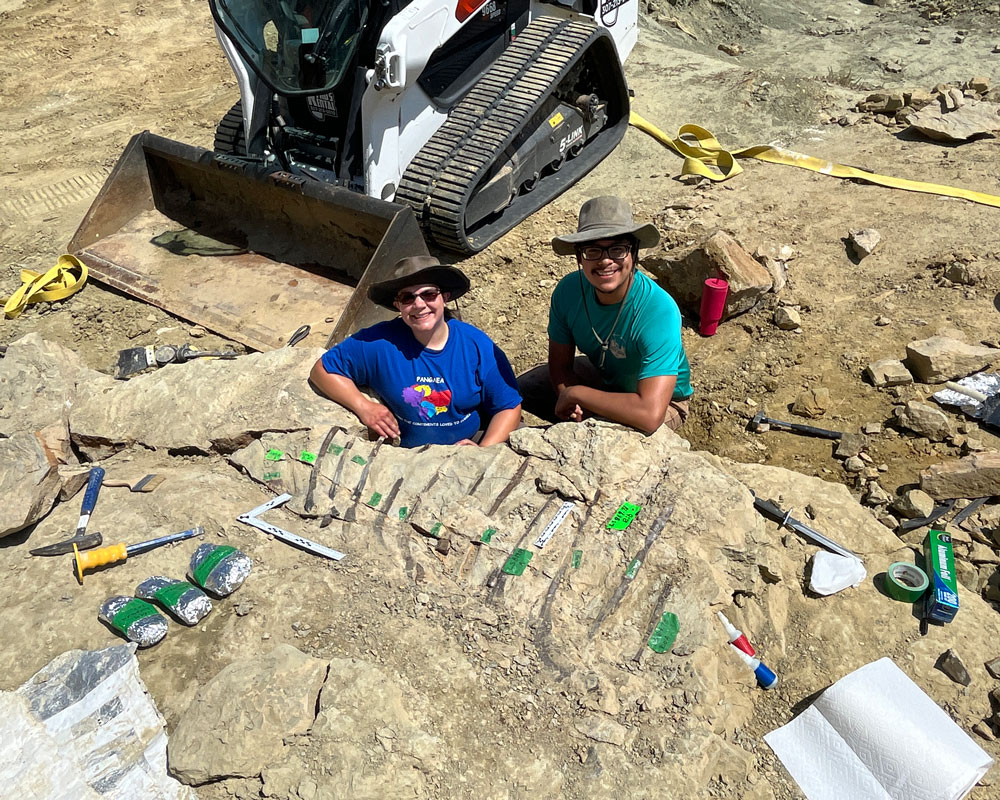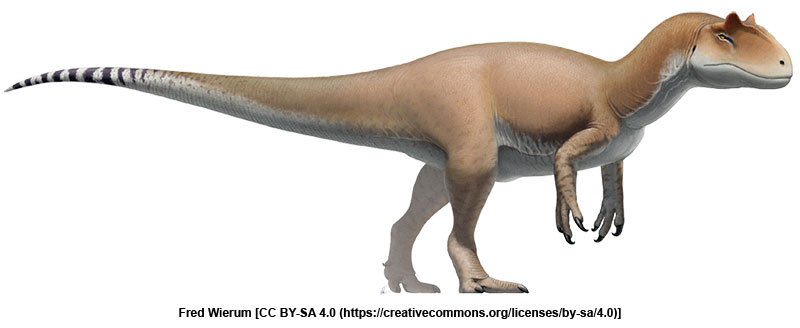An Exciting Allosaurus Discovery at the Jurassic Mile Dig Site
An Exciting Allosaurus Discovery at the Jurassic Mile Dig Site

During the summer of 2020, Mission Jurassic™ returned to The Jurassic Mile® dig site in Wyoming. Our paleontology team was laser-focused: get as much of the giant sauropods they’d discovered out of the ground so the fossils would be ready for the 2022 opening of Giants of the Jurassic™. They delivered in a big way. You can see the results of their hard work when two massive sauropods—four-legged, long-necked, plant-eating dinosaurs—greet you as you walk down the ramp into Dinosphere®.

Our team made another major discovery that summer. While they were using an excavator to expand the quarry, they stumbled upon another set of bones that clearly did not belong to the sauropod they were uncovering. In fact, they were found in a completely different layer of rock where they had not found a fossil in this layer of rock before.
This was a huge shock.
We’ve said before that The Jurassic Mile® is a fossil-rich environment. There’s probably enough dinosaur material there to “keep a thousand paleontologists happy for a thousand years.” But this discovery in this area of the dig site? Completely unexpected.
The surprises didn’t end there
The team cleared away the debris and were shocked at what they found—a stone block containing an articulated Allosaurus fossil. What’s that mean? That means that the bones were connected in the exact order and position that they would have been in when the animal was still alive.
Finds like this are incredibly rare. After 150 million years of decay, scavengers, exposure to the elements, erosion, and other outside forces, it’s almost unheard of to find a fully articulated fossil like this one. It’s only under special conditions that some parts of an organism will be preserved intact. An Allosaurus like this one?
Incredible.

Our team had seen some Allosaurus signs around The Jurassic Mile®. Members of the dig team had found an Allosaurus claw. There’s also evidence of bite marks on the sauropod bones on display in Dinosphere®. Over the years, the dig teams had also found some shed Allosaurus teeth. Because theropod dinosaurs like Allosaurus would tear into meat all the time, they would shed their teeth. It was not a surprise to find lost Allosaurus teeth scattered around the Jurassic Mile®.
Finding a whole Allosaurus, on the other hand, is a major find!
Mission Jurassic is a $27.5-million project that will be brought to life through the generosity of donors like you. For extraordinary naming opportunities check out our Mission Jurassic Field Guide.
Make a Donation
That’s great! What’s an Allosaurus, anyway?
The name Allosaurus means “different lizard.” It was a carnivorous theropod—a two-legged dinosaur that had hollow bones and three-toed feet—the top predator of the Jurassic Period, reaching sizes up to 30 feet in length. Fossils of Allosaurus and its relatives are found on almost every continent and it is the most abundant large predator found in the Morrison Formation—home of The Jurassic Mile®. There are areas around the world that had a large number of these animals, allowing scientists to see things such as growth patterns and injuries. They had massive claws and close to 80 serrated teeth.
The life of an Allosaurus was filled with danger. Museum specimens across the country have injuries and bite marks that show evidence of violent behavior. Some of these could have been caused by prey like sauropods or Stegosaurus defending themselves, others could have been from other Allosaurus. One specimen, nicknamed Big Al, had 19 bones affected by either injuries or diseases.
The Allosaurus specimen our paleo team discovered in Wyoming has several injuries, too. There are signs that its femur had been broken at one point and was beginning to heal. The tibia and fibula also appear to have been infected.
A work in progress

Over the course of several years, the Allosaurus fossil was brought to Indianapolis. The legs arrived in our paleo prep lab in 2020. In 2022, the hips and tail were excavated. In 2023, the Allosaurus ribcage, neck, and skull were brought to the museum. They also found skin impressions from this specimen in 2023—another incredibly rare find.
We cannot say this enough—finding this much intact skeleton in one place is an amazing discovery! The skull itself is rare enough. They’re incredibly delicate and are rarely found intact. Our team was ecstatic to find it.
 Did you know?
Did you know?
You can join our paleontologists on an amazing adventure at The Jurassic Mile® dig site!
Join the Adventure
At the museum, our paleontology team has been painstakingly working to piece the Allosaurus fossil back together. In late September 2023, the Allosaurus legs were put on display in front of the R.B. Annis Mission Jurassic Paleo Lab. But the work isn’t complete. There’s still a lot of matrix—the rock around a fossil—to clear away. You can watch our team continue to prep the Allosaurus fossil in the lab. They might even make a new discovery or two while you’re there!

Mission Jurassic™ continues in the Paleo Lab
Articulated fossils like this one are rare treasures that can teach us a lot about the past life on Earth, but they also require careful study and preservation. The best way to stay up-to-date about the latest Allosaurus discoveries is by visiting the Paleo Lab regularly. That’s one of the many reasons why museum membership is such a great idea! Not a member? Consider becoming one today.










